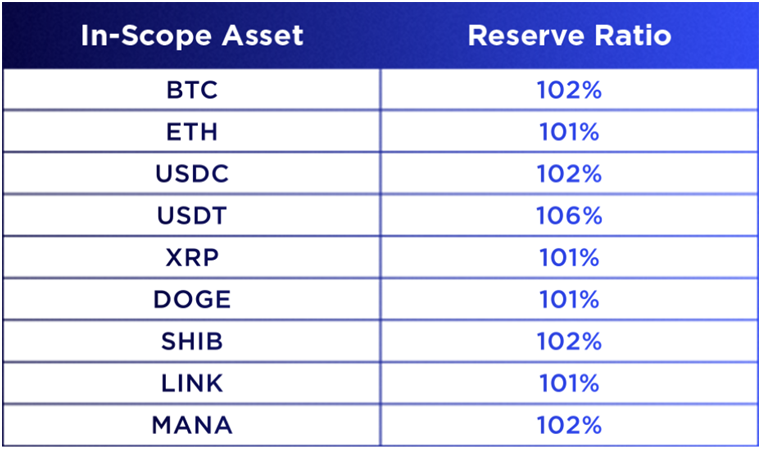
Crypto.com published its Proof-of-Reserve that shows that they have over 100% reserves for major tokens.
FTX Collapse has shattered the market. Crypto users have become more cautious. Crypto.com gave cause for concern when they paused withdrawals on the Solana network after the FTX crash. Now, to reassure their users that they can trust the company, Crypto.com released its proof of reserves.
“Providing audited Proof of Reserves is an important step for the entire industry to increase transparency and begin the process of restoring trust. [...] Crypto.com is fully committed to providing customers around the world a safe, secure, and compliant means of engaging with digital currencies.” - Kris Marszalek, CEO of Crypto.com
The audit was conducted by Mazars Group, the same company that was responsible for Binance Proof-of-Liabilities (and the company that Donald Trump used to carry out his audits, by the way). Mazars confirmed that Crypto.com has enough assets for corresponding client funds. The reserve ratios amounted to over 100% for each token as of December 7, 2022.

However, this verification does not cover all tokens. Crypto.com notes they are working on tools that would allow verifying additional tokens, protocols, and networks, including Cronos (CRO) and VeChain (VET).
The Crypto.com report provides a method to self-audit the reserves for any user so that they can be sure their funds are backed. A data structure called “Merkle Tree” allows customers to independently verify that their assets are included in the snapshot balance. Each customer has their own Merkle leaf that is represented by a hash of their account balances, which allows for proof that their liabilities are part of the larger Merkle tree on a separate auditor page under the control of Mazars.
However, some people do not trust this report, saying that it is not an official audit, but rather a “matching exercise”. The same criticism was expressed towards the Binance report.
“They did a comparison of balances per public key address from a list they got from management. They did not compare any balances in independent banks or custodians or depositories. This is more worthless than even the Tether or USDC report.” "It is [Crypto.com report] no better than the Binance report, which is not surprising since it is the same firm and partner doing it." - Francine McKenna, lecturer in financial accounting at the Wharton School at the University of Pennsylvania.
Exchanges are going through hard times nowadays. We hope that encouraging exchanges’ reports coincide with reality and your funds are safe and sound. But keep watching.
